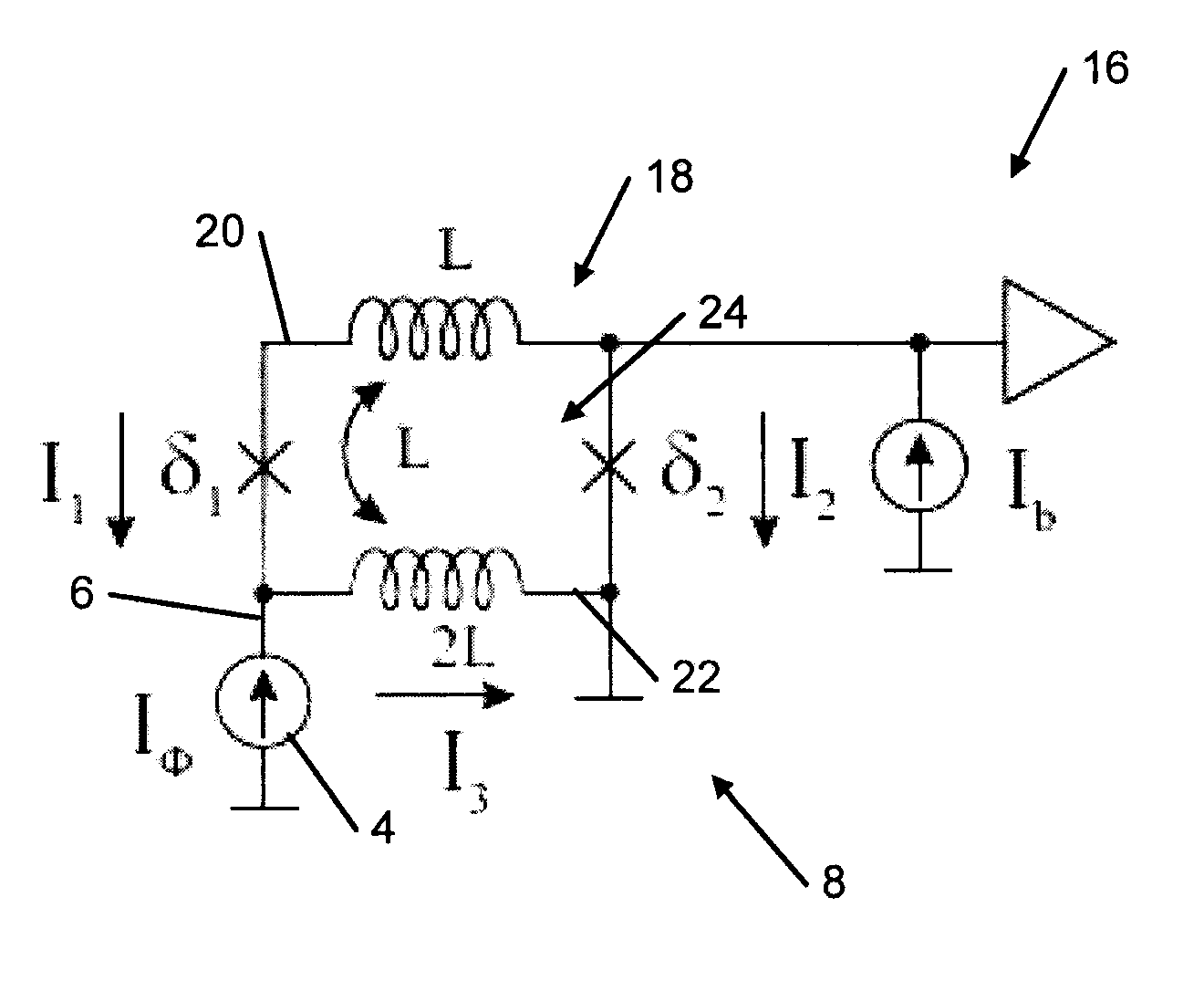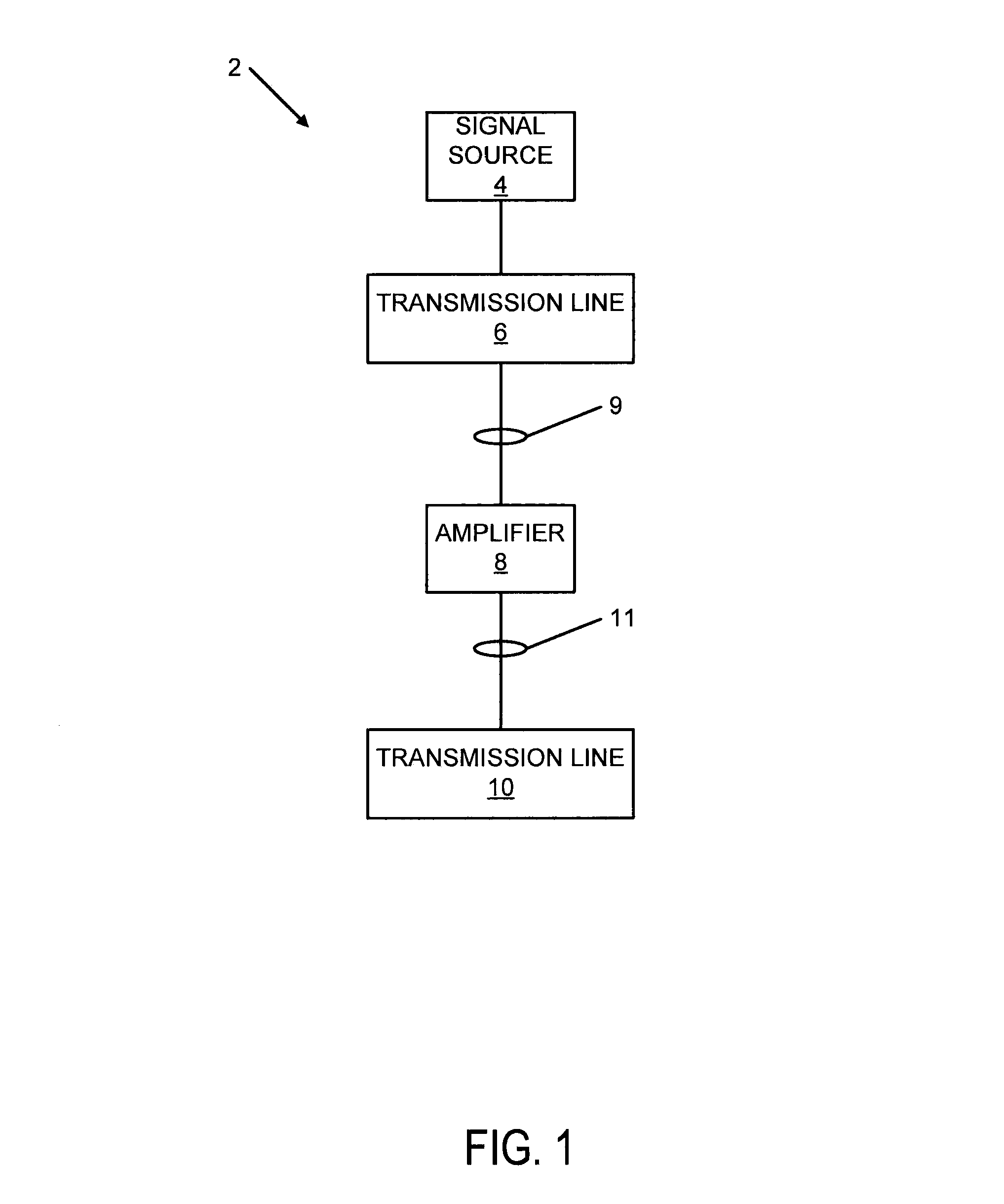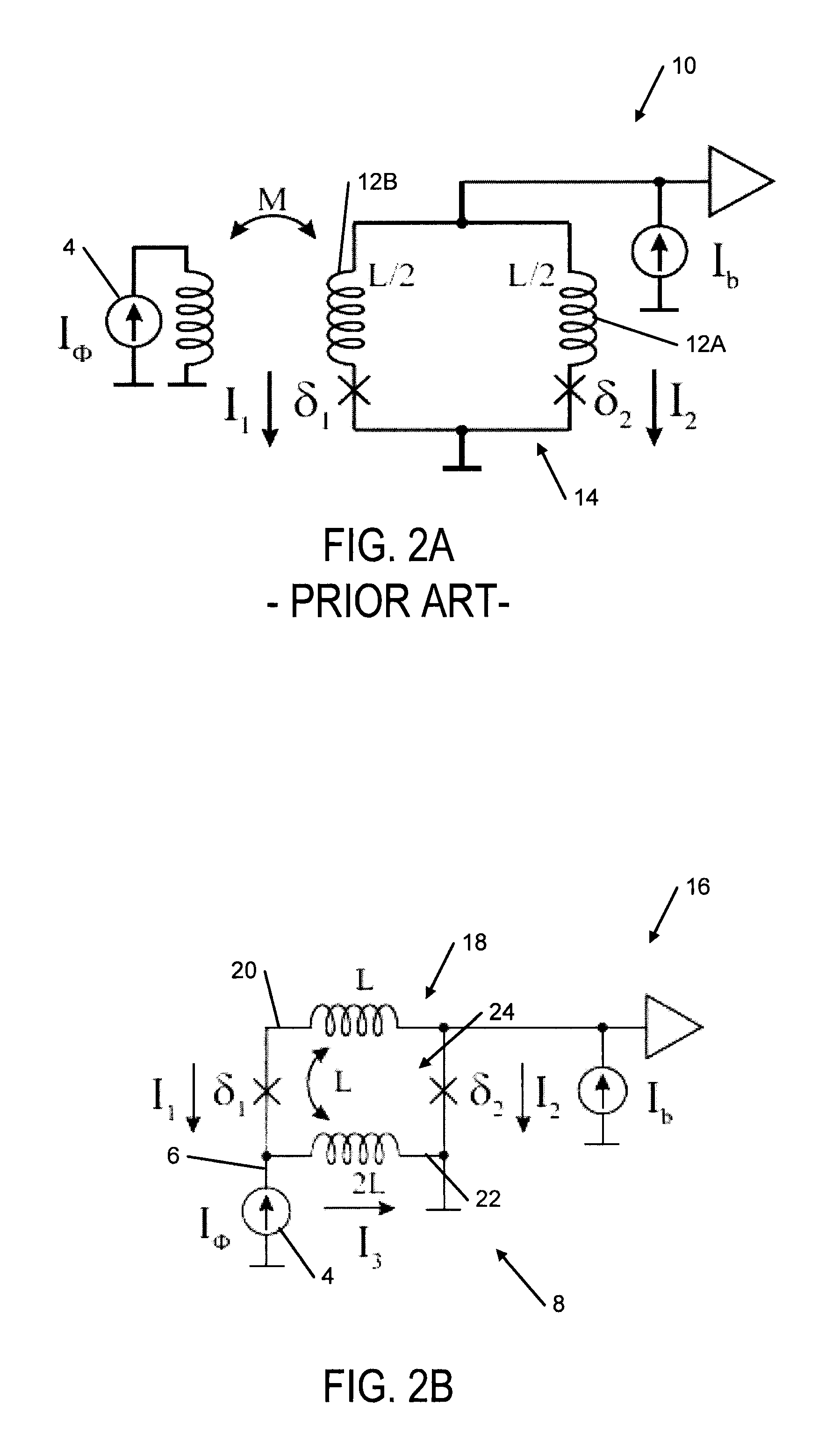System and method for high-frequency amplifier
a high-frequency amplifier and low-noise technology, applied in the field of high-frequency amplifiers, can solve the problems of difficult to match the input and output of inductive coupling, difficult to embed squid-based amplifiers in traditional transmission lines, and difficult to utilize traditional squid-based amplifiers within transmission lines, etc., to achieve the effect of improving the signal-to-noise ratio, simple modeling at microwave frequencies, and easy integration into low-impedance rf or microwave transmission lines
- Summary
- Abstract
- Description
- Claims
- Application Information
AI Technical Summary
Benefits of technology
Problems solved by technology
Method used
Image
Examples
Embodiment Construction
[0044]Referring to FIG. 1, a schematic, block diagram is provided illustrating an exemplary device architecture incorporating the present amplifier system. System 10 includes signal source 4. Signal source 4 may include a high-frequency signal source in the range of RF or microwave (in one example, a signal having a frequency between approximately 1-10 GHz). The high-frequency signal source 4 may be a quantum computing device or another source of high-frequency communication signals, such as those found in satellite or space-based applications.
[0045]Signal source 4 is connected to input transmission line 6. In one implementation, transmission line 6 is an approximately 50 or 75Ω transmission line. Transmission line 6 is directly connected to amplifier 8. The transmission line 6 being “directly” connected to the amplifier 8, as will be described, refers to the transmission line 6 being connected to an integrated input matching network of the amplifier; this input network in turn has ...
PUM
 Login to View More
Login to View More Abstract
Description
Claims
Application Information
 Login to View More
Login to View More - R&D
- Intellectual Property
- Life Sciences
- Materials
- Tech Scout
- Unparalleled Data Quality
- Higher Quality Content
- 60% Fewer Hallucinations
Browse by: Latest US Patents, China's latest patents, Technical Efficacy Thesaurus, Application Domain, Technology Topic, Popular Technical Reports.
© 2025 PatSnap. All rights reserved.Legal|Privacy policy|Modern Slavery Act Transparency Statement|Sitemap|About US| Contact US: help@patsnap.com



